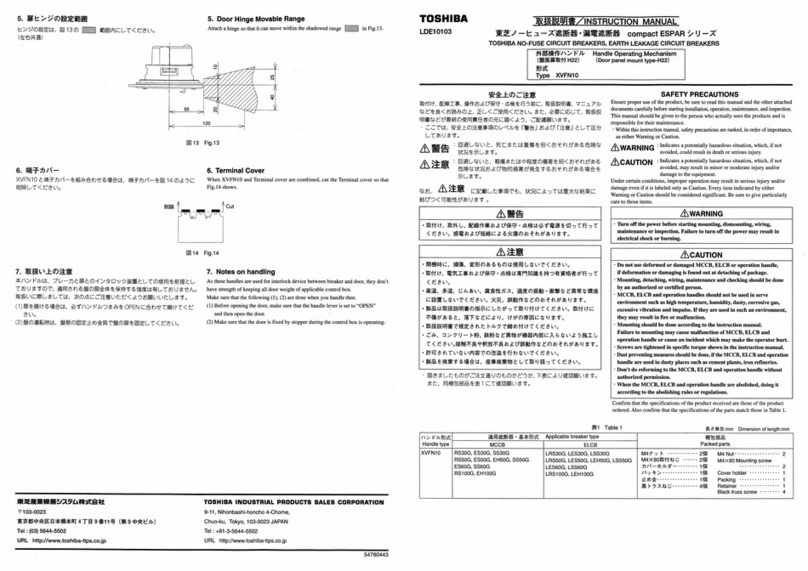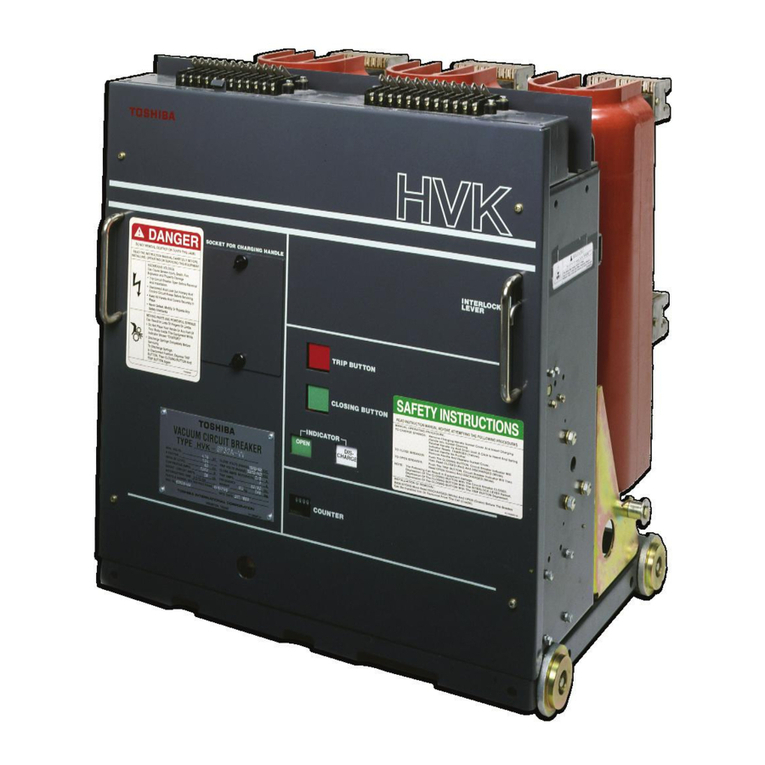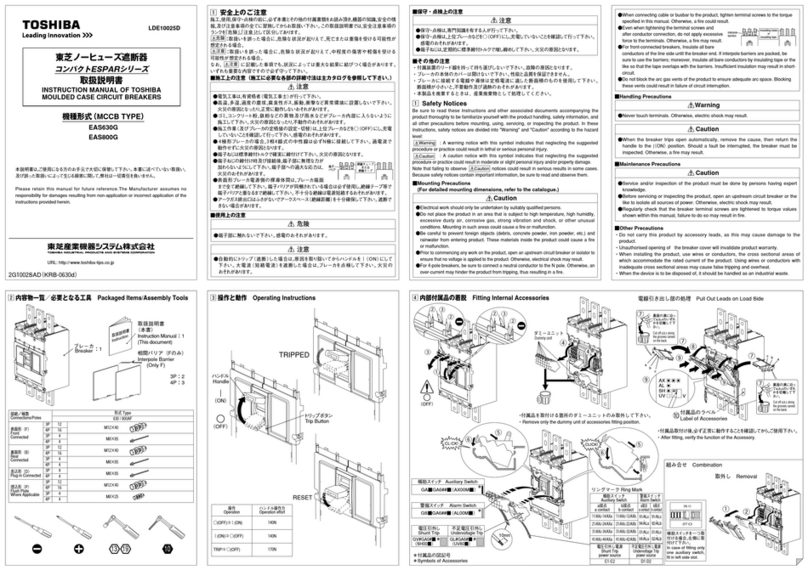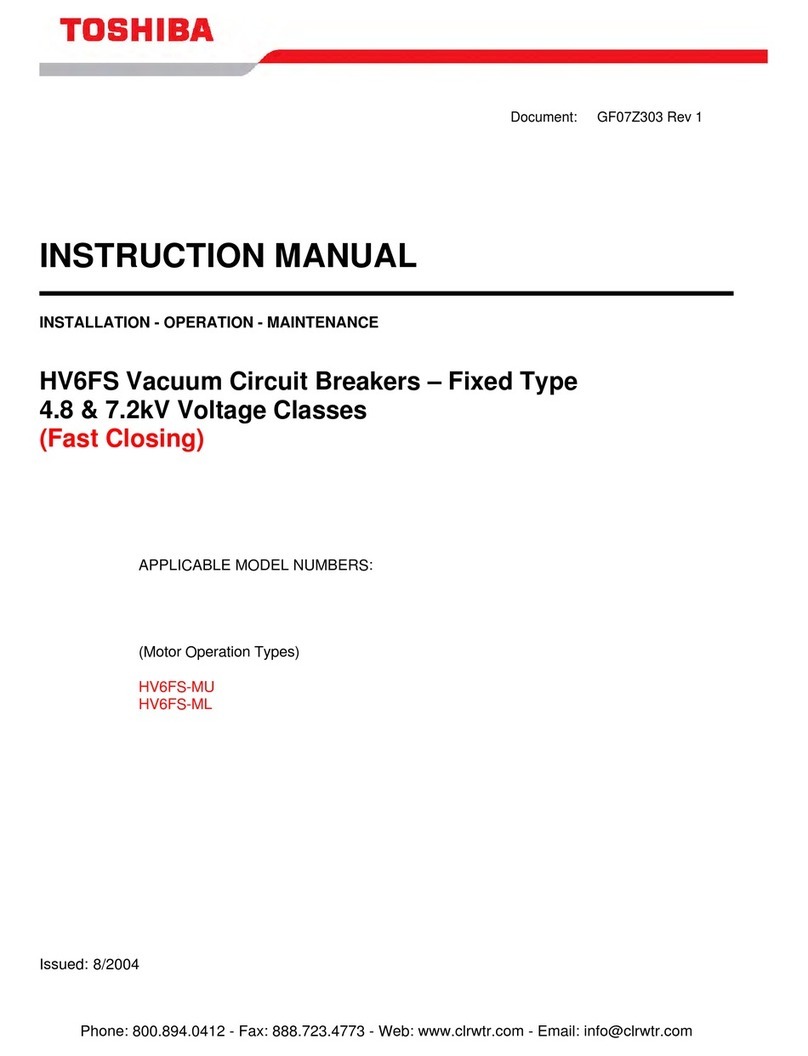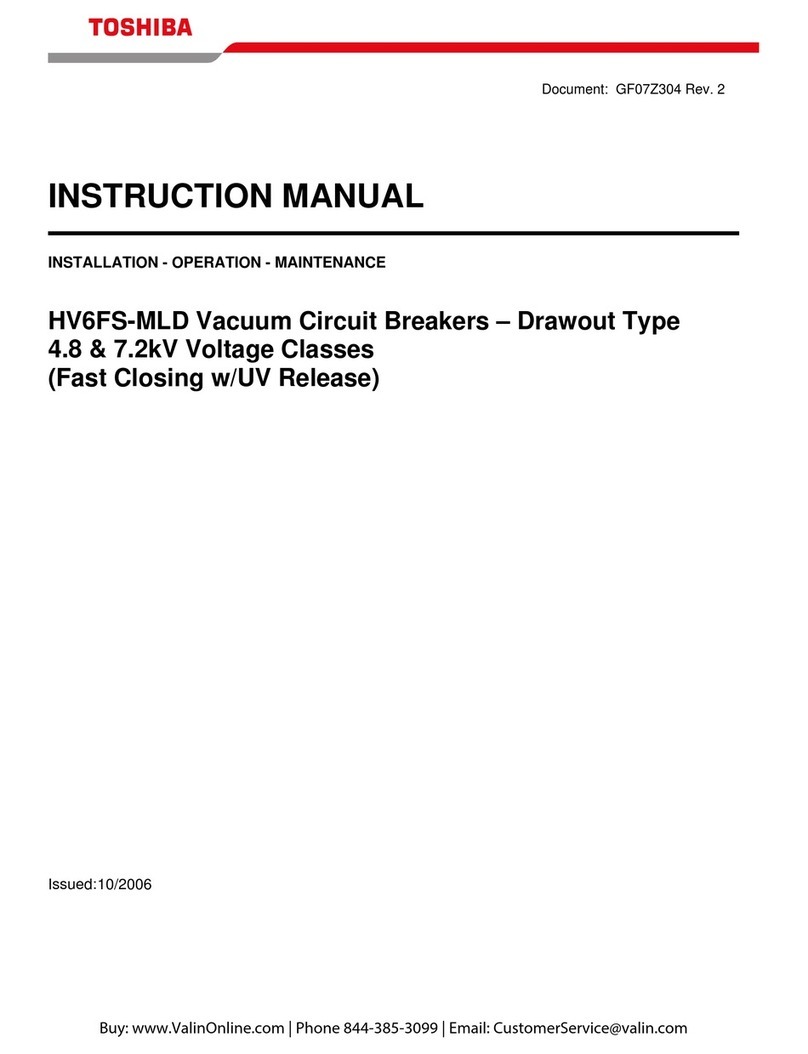Toshiba VK Series User manual
Other Toshiba Circuit Breaker manuals
Popular Circuit Breaker manuals by other brands

WEG
WEG FHU ACW125 installation instructions

TERASAKI
TERASAKI NHP TemBreak PRO P160 Series installation instructions

Siemens
Siemens Sentron 3VA9157-0PK1 Series operating instructions

hager
hager TS 303 User instruction

ETI
ETI EFI-4B Instructions for mounting

Gladiator
Gladiator GCB150 Installation instruction
